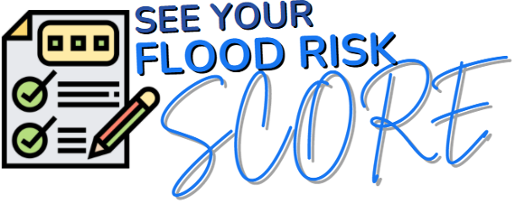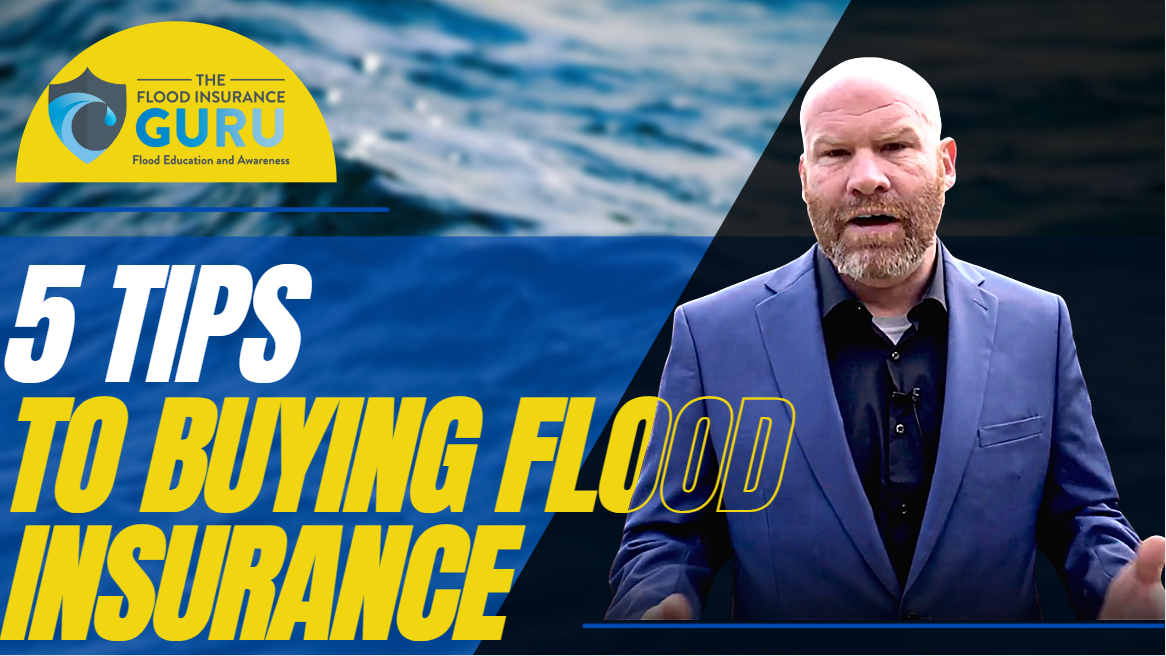
Buying flood insurance doesn't have to be complicated or confusing. Our goal is to simply flood insurance and understand flood risks through education.
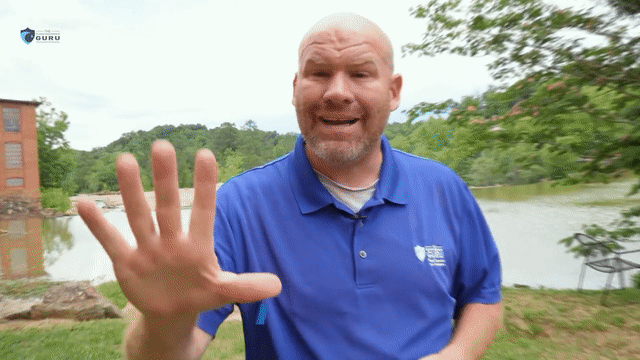
Flooding is the number 1 natural disaster in the United States. Today we are going to discuss 5 tips for buying flood insurance. So the five things you need to know about are:
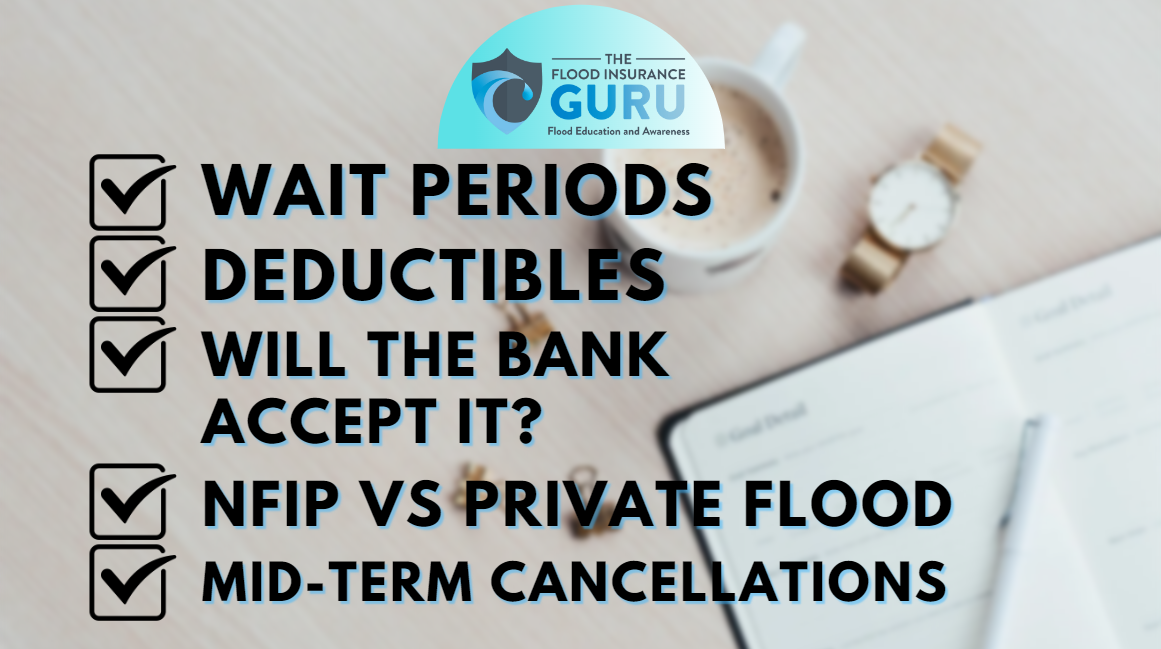
Flood insurance policies are not all the same so it's important to ask the right questions.
1. Wait periods
Almost all flood insurance policies have some kind of wait period. There are different wait periods for each situation. Let's look at the National Flood Insurance Program (NFIP) first.
National Flood Insurance Program
There are three common wait periods with the National flood Insurance Program
- Loan closings
- New mapped policies
- Standard wait periods
Let's look at loan closings first. Generally, if a property is requiring flood insurance for a loan closing this means that there is no waiting period. This means if a claim occurs a week after closing then you would have immediate coverage. It's important to know that in order for a claim to be paid out payment has to have been received.
Now let's look at newly mapped policies. These are properties that in the past were not required to have flood insurance but they are now because of flood map change. This is generally when a property is moved from a flood zone X to something like flood zone a or flood zone AE.
Watch the videos below to get an understanding of the different flood zones.
When it comes to newly mapped policies you are going to be looking at a 1 day wait period. So if the policy is set up today then it would be effective tomorrow. These types of policies had a larger financial benefit before the release of risk rating 2.0. This is because flood zones no longer determine flood insurance rates with the National Flood Insurance Program.
Now let's look at the standard wait period with the National Flood Insurance Program. The standard wait period is 30 days. So if we set up a policy today it won't be effective until 30 days from now.

Now you remember when we discussed no waiting period with loan closings? Well, there could be an exception if payment is not received within a certain time frame. If you are an insurance agent or an insured then you have 10 days to make the payment. If you are a mortgage company then you have up to 29 days to get this payment in.
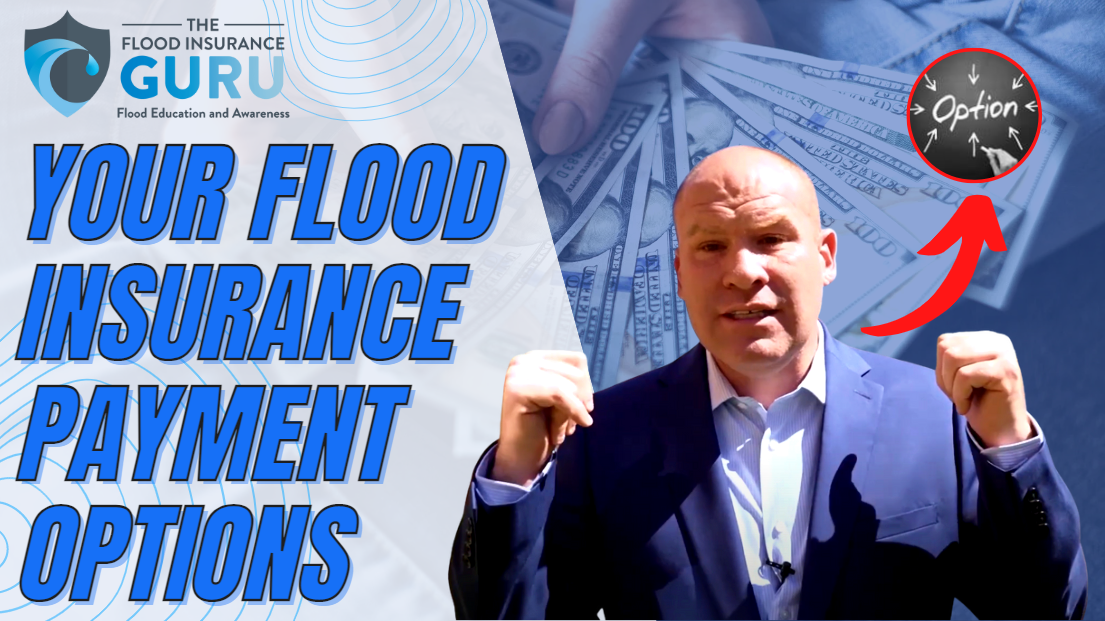
So what happens if payment is not received within that time frame?
Then you would have a 30-day wait period kick in from the date the payment is received. This is important to remember when you are talking about flood coverage, flood claims, or possible flood damage.
Private Flood Insurance
Now let's take a look at private flood insurance when it comes to flood insurance wait periods. Private flood insurance works completely differently than the National Flood Insurance Program. While they also do no wait periods for loan closings their other wait periods might range from 1 day to 15 days.
Each insurance company has different guidelines for their wait periods.

2. Deductibles
Flood insurance deductibles are completely different than homeowners insurance policy deductibles. On a home insurance policy, you may only have one deductible. However, a flood policy could have three different deductibles.
These deductibles could have some impact on insurance costs as well. The higher the deductible the lower the insurance premium could be. Let's take a look at where these different deductibles could apply:
The coverages above are the three standard coverages on a flood insurance policy. It's important to know whether you have your flood insurance directly through the National Flood Insurance Program or with a Write Your Own Carrier that additional living expenses are not currently an option. Currently in 2022 additional living expenses are only offered by private insurance companies.

When picking these deductibles you want to add all three together because there is a possibility you may have to pay three deductibles at one time. This is one thing many people do not think about so instead of maybe a $5000 deductible they really have a $15000 deductible.
Yikes!
3. Will the Bank Accept the Policy
Every day we see property owners take out a flood insurance policy and we see the bank deny it. So why would they deny the flood policy?
This could happen for a couple of reasons, some are due to coverage amount and type of policy. Recently, we saw a bank deny a policy for one of the craziest reasons too much coverage. Yes, you read that right too much coverage.
This property owner in Vestavia Alabama was told by their bank they would only accept a policy for the standard $250,000. This customer wanted to insure the property for replacement cost coverage but was told they could not.

Generally, when we see this happen it's because there is not enough coverage on the policy or at FEMA's max residential coverage of $250,000.
Now let's look at the type of policy.
If you are doing an FHA loan then, generally, they will not accept private flood insurance. This is where we see a lot of property owners get in trouble. They get a couple of days before closing and are told that flood insurance is not acceptable because it is a private policy. They call their insurance agent to get it changed and the flood insurance premium goes from $800 to $4200.
Why is that? Well, insurance companies look at flood risk differently. So when looking at purchasing flood insurance you want to make sure you inform your insurance company of what type of loan you are doing.
If they tell you it doesn't matter, then you want to find an insurance company that understands loan types and flood insurance options.
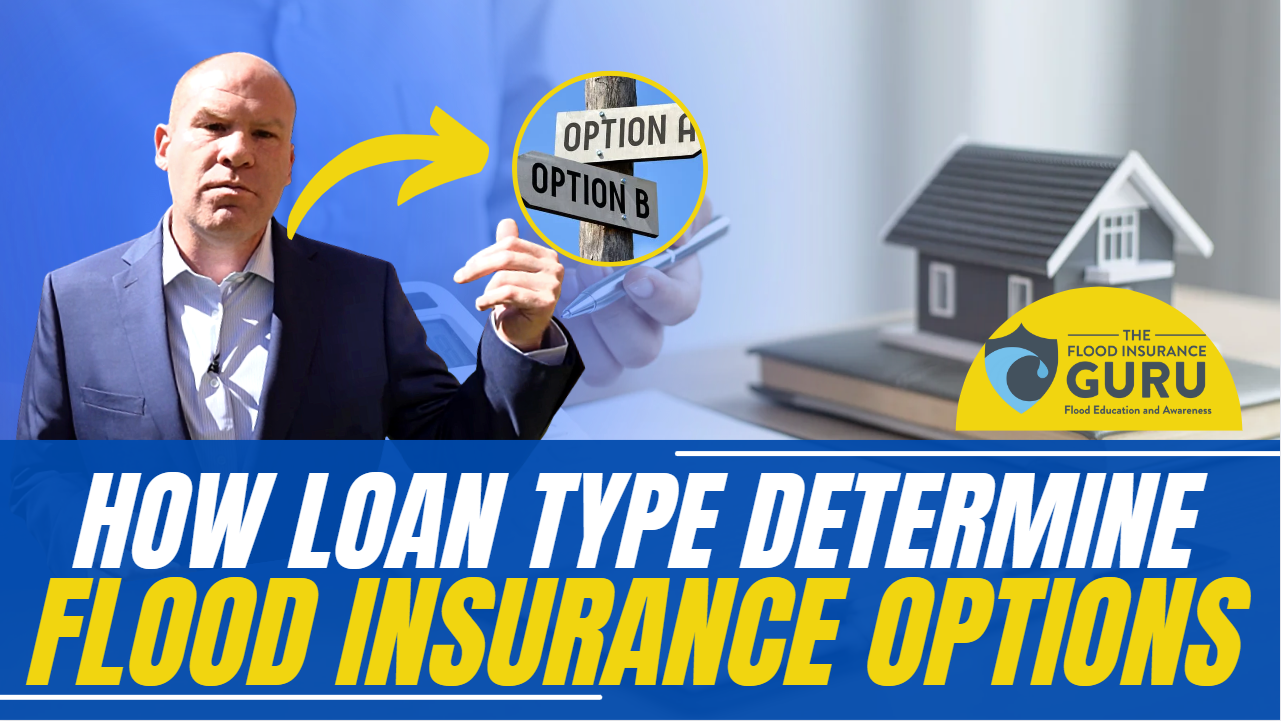
4. Difference Between NFIP and Private Flood
When purchasing flood insurance you want to make sure whoever you are working with has access to private flood insurance and flood insurance through the National Flood Insurance Program.
There are a lot of differences between these two. Until risk rating 2.0 came out one of them was an elevation certificate might have been required.
Some of the other differences are how flood zones are viewed. Flood zones have minimal impact on rates in many situations. Instead, a flood risk score and the actual flood risk are used with other factors to determine flood rates.
You can find your flood risk score by clicking here.
Pricing might be one of the leading differences. Over the last 10 years, private flood insurance has shown to be much less in high-risk flood areas and high-risk flood zones. One reason for the pricing difference was also building occupancy.
The National Flood Insurance Program charges a $250 surcharge if a property is not a primary residence while most private insurance companies do not.
5. Mid-Term Cancelations
Cancelations have become a major talking point with flood insurance. One reason is a few years ago FEMA stated they would allow mid-term cancelations and then changed the bulletins.
Most property owners think flood insurance is just like homeowners insurance on this topic. While flood insurance companies are very strict on mid-term cancelations.
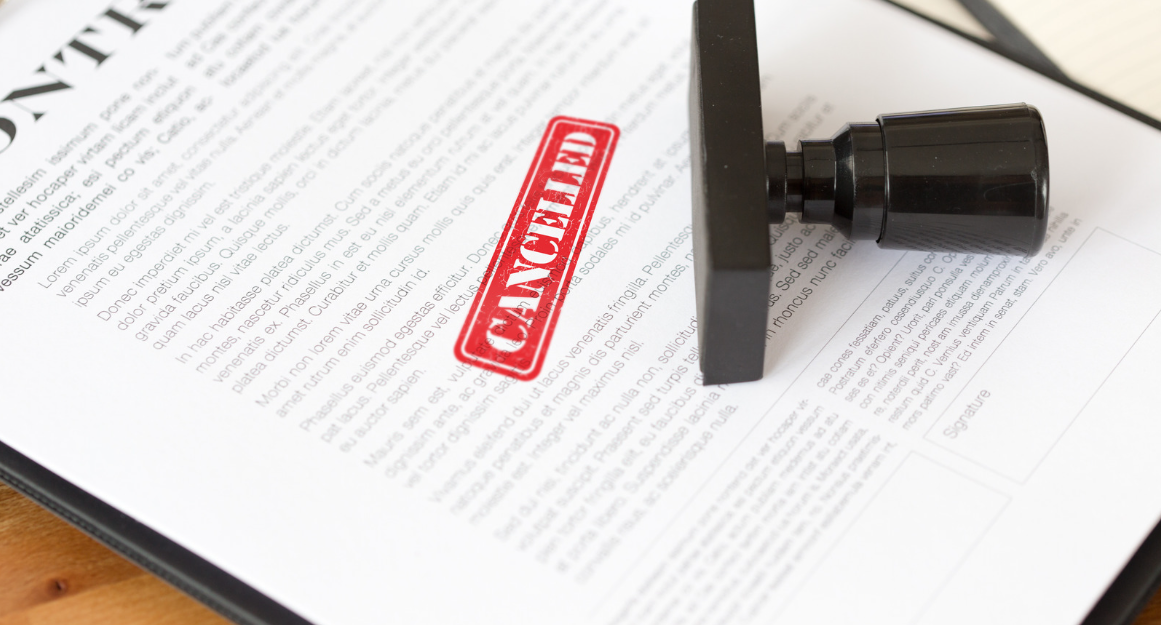
There are about 28 different FEMA cancellations, but for this one, we are going to discuss the top 3 most popular reasons that will be approved for a policy to be canceled mid-term.
- Flood map change
- Property sold
- Mortgage no longer requires insurance

Flood map changes are very common across the country they are constantly happening. When a property goes from a special flood area to a minimal flood area this qualifies for a flood map change. However, this does not mean that things like heavy rains won't cause flood water to enter your property.

The next popular reason for a flood insurance policy to be canceled is if a property is sold. Generally, when this happens a signed cancelation letter and a closing settlement are required to get the flood policy canceled. The rule of thumb with most carriers to get a refund out is 30 days.
It's important to know that refunds could be different if it is a private flood insurance policy. You want to pay attention to if fees will be refunded or just the base premium.

The last most popular cancelation reason is if a mortgage is paid off. if this happens you simply need to submit a signed cancelation letter and a letter from the bank showing they no longer require flood insurance.

So these are the 5 tips to buying flood insurance. If these tips had been available when I was purchasing flood insurance then I may not have had the trouble I did. However, that might mean that we would not have been committed to flood education as we have for the last 10 years.
If you want to learn more about flood resources make sure to check out our learning center here.
If you want to review the best flood insurance options then click below.
Remember we are here to simplify purchasing flood insurance and understanding flood risks through education.
Topics:


